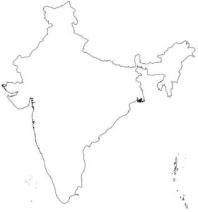SIGNIFICANT DEVELOPMENTS:The Patents (Amendment) Ordinance, 2004 was promulgated by the President of India as Order No: 7 of 2004. With this, the Indian government has met the deadline for complying with India’s obligation under the TRIPS on Patent law by extending product patents to pharmaceutical, food and chemicals. Rules for operation of product patents would be notified soon on the basis of the ordinance. The government of India chooses the Ordinance route since the Patent (Third) Amendment Bill could not be cleared in the winter session of the Parliament. This means that the amendment would need to be cleared by Parliament within seven weeks from the time the Budget Session begins. The salient features of the Ordinance are: - Software would now be patentable if embedded with hardware. Currently, the intellectual property rights (IPR) protection with regard to software is limited to copyrights.
- The rights of mailbox applicants have now been rendered “prospectively operational only,” that is, only from the date of grant of the patent and not retrospectively from the date of publication. Mailbox is a facility introduced in the Patent Act through the first amendment in 1999, allowing anybody to apply for patents for inventions made during 1995-2005. The new provision also gives existing generic producers of likely-to-be-patented drugs protection from patent infringement suits. Processing of the Mailbox applications – there are already over 12,000 of them- can start from January 1.
- The ordinance seeks to retain a definite, time-bound (90 days) pre-grant opposition provision, which the earlier draft, sought to dilute with a weak, pre-grant representation. However, the opposition would now be allowed only on the grounds of “patentability.” Post-grant, a patent can be opposed before the patents controller as well as in a court of law.
- Indians wanting to file for patents abroad will need a no-objection certificate from the Indian government. This provision has been included specifically to guard against patenting of dual use technologies, one of which could be hazardous.
- Compulsory license – which is a facility with the government to sidestep patents under defined circumstances-, can now be issued “without the grace period of three years from grant of patent.”(This provision is in accordance with the Doha Declaration on Public Health).
- The Ordinance also facilitates production and marketing of patented products immediately after expiry of a patent by permitting preparatory action by non patentees during life of a patent. Also parallel imports to make a drug available at the lowest international price have been allowed.
- Provisions related to processing of patents have been streamlined to cut down delays in issue of patents. Instead of the existing provisions that would take nearly eight years, the simplified procedures would ensure processing within four years.
|



